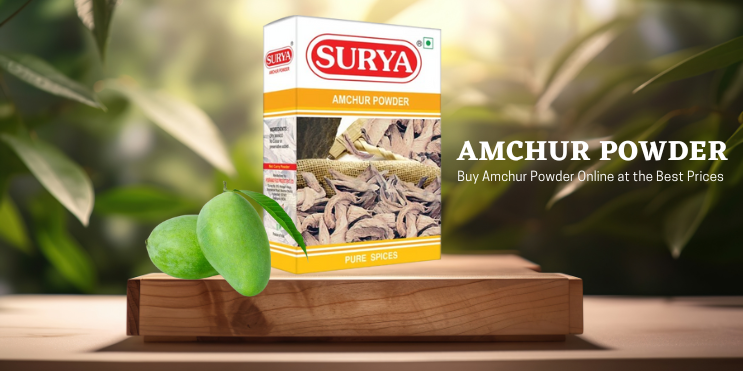Lebanon, a small yet vibrant country nestled in the heart of the Middle East, is a land of diverse natural beauty. From its stunning Mediterranean coastline to its towering mountain ranges, Lebanon boasts a landscape that inspires awe. But amidst this breathtaking scenery lies another hidden gem – the Lebanese garden.
Gardens, both public and private, have been an integral part of Lebanese culture for centuries. These beautiful green spaces are a testament to the rich horticultural heritage that has been passed down through generations. As we delve into the world of Lebanese gardens, we will discover the history, design, and cultural significance that make them a vital part of Lebanon’s identity.
History of Lebanese Gardens
Lebanese gardens have a long and storied history, dating back thousands of years. They have evolved over time, reflecting the influences of various civilizations that have occupied this land. The earliest gardens in Lebanon can be traced to the Phoenicians, who cultivated orchards and vineyards.
The influence of the Romans and Byzantines introduced new elements, such as intricate mosaics and ornate water features. However, it was during the Islamic rule that the concept of the Islamic garden, with its geometric designs and flowing water, truly blossomed.
The Ottoman era further contributed to the development of gardens in Lebanon, with the creation of magnificent palace gardens that featured intricate architecture, fountains, and exotic plants. The French Mandate period also left a mark, as it introduced elements of European garden design.
In recent decades, urbanization and modernization have posed challenges to the preservation of traditional gardens. However, many Lebanese are still deeply connected to their gardening traditions, and efforts are being made to protect and promote these green spaces.
Design Principles of Lebanese Gardens
Lebanese gardens, whether grand or modest, are characterized by specific design principles. These principles create a sense of harmony and tranquility, making them distinctive and aesthetically pleasing.
Courtyard Layout: Lebanese gardens often adopt a courtyard layout, with the main garden area surrounded by buildings. This design provides privacy and serves as a refuge from the hustle and bustle of daily life.
Water Features: Water is a central element of Lebanese gardens. Fountains, reflecting pools, and flowing streams are common, providing a soothing and cooling effect. These water features are often adorned with colorful mosaics and ornate tile work.
Geometric Patterns: The use of geometric patterns, often in the form of mosaic tiles or clipped hedges, is prevalent in Lebanese gardens. These patterns add a sense of order and symmetry to the design.
Fruit Trees and Flowers: Lebanese gardens are known for their lush greenery and vibrant flowers. Fruit trees, such as citrus and fig, are commonly found, along with a variety of colorful blooms like roses and jasmine.
Shade and Seating Areas: Comfortable seating areas are strategically placed throughout the garden, allowing people to relax in the shade of tall trees or pergolas covered with vines.
Arched Passageways: Arched passageways, often covered in climbing plants, create a sense of mystery and intrigue as visitors move from one part of the garden to another.
Cultural Symbols: Many Lebanese gardens incorporate cultural symbols, like cedar trees, which are a national emblem, and religious iconography.
The combination of these design principles creates an atmosphere of serenity and beauty, making Lebanese gardens an escape from the chaos of modern life.
Cultural Significance of Lebanese Gardens
Lebanese gardens are not merely places of beauty; they hold deep cultural significance. They are a reflection of the Lebanese way of life and are intrinsically linked to the country’s history, identity, and values.
Hospitality: Lebanese people are known for their warm hospitality, and this trait is often mirrored in their gardens. It’s common to invite friends and family to the garden for gatherings and meals. The garden serves as a welcoming space to share good food and create lasting memories.
Connection to Nature: Lebanese gardens celebrate the natural world. The connection to nature is not just for aesthetic purposes but also reflects a reverence for the environment and an understanding of its importance in sustaining life.
Cultural Identity: Lebanese gardens are an expression of cultural identity. The use of native plants, traditional design elements, and religious symbolism all contribute to a sense of pride and cultural continuity.
Sanctuary: In a region marked by political and social challenges, gardens serve as a sanctuary. They offer a place of respite, a retreat from the stress of daily life, and a reminder of the beauty and tranquility that can be found even in tumultuous times.
Interplay of History and Modernity: Lebanese gardens also represent the interplay between history and modernity. As Lebanon has evolved, so too have its gardens. They are a living embodiment of the country’s ability to adapt and change while preserving its roots.
Notable Lebanese Gardens
Several Lebanese gardens stand out as shining examples of the country’s horticultural heritage. These gardens are not only beautiful but also carry historical and cultural significance.
Beiteddine Palace Gardens: Located in the Chouf Mountains, the Beiteddine Palace is renowned for its magnificent gardens. The palace’s design reflects both Ottoman and Arab architectural influences, and the gardens are filled with citrus trees, colorful flowers, and ancient cedars.
AUB Botanic Garden: The American University of Beirut (AUB) Botanic Garden is an educational and research hub for both local and international visitors. It is home to an impressive collection of native and exotic plants, offering an opportunity to learn about Lebanon’s diverse flora.
Villa Audi Gardens: This charming garden in the heart of Beirut was once a private residence and is now open to the public. Its lush greenery and tranquil atmosphere provide a peaceful oasis in the midst of the bustling city.
Beirut’s Sursock Museum Garden: The Sursock Museum is renowned for its collection of modern and contemporary art, but its garden is a work of art in itself. The garden features a fusion of traditional and modern elements, creating a serene space for visitors.
Jeita Grotto Gardens: Situated near the famous Jeita Grotto, these gardens offer a stunning backdrop to the natural wonder of the cave. The gardens are meticulously landscaped and incorporate native plant species, enhancing the overall experience.
Challenges and Conservation Efforts
While Lebanese gardens are a source of pride and cultural significance, they face several challenges in the modern era.
Urbanization: The rapid pace of urbanization in Lebanon has led to the loss of green spaces. As cities expand, many traditional gardens are being replaced by concrete structures.
Climate Change: Lebanon, like many other regions, is experiencing the impacts of climate change. Rising temperatures, changing precipitation patterns, and increased pests and diseases pose a threat to garden plants.
Water Scarcity: Water scarcity is a growing concern in Lebanon. The maintenance of water-intensive gardens is becoming increasingly challenging, and there is a need for more sustainable water management practices.
Neglect and Abandonment: Some historic gardens have fallen into a state of disrepair due to neglect and abandonment. Without proper care, these cultural treasures risk being lost forever.
To address these challenges, various conservation efforts are underway. NGOs, community organizations, and government initiatives are working to preserve and restore Lebanese gardens. This includes raising awareness about the importance of green spaces, implementing sustainable gardening practices, and offering support to garden owners and caretakers.
The Future of Lebanese Gardens
Lebanese gardens have a bright future, as they continue to be a source of inspiration and cultural pride. The resilience of the Lebanese people and their commitment to preserving their heritage is evident in the efforts to protect and revitalize these gardens.
The future of Lebanese gardens also includes the integration of modern sustainable practices. As the world grapples with environmental concerns, Lebanese gardeners are finding ways to adapt while staying true to their cultural roots. This might involve the use of native and drought-resistant plants, efficient water management, and eco-friendly design principles.
In addition, Lebanese gardens are increasingly becoming a platform for education and cultural exchange. They provide a unique opportunity for visitors from around the world to learn about the history, culture, and horticultural practices of Lebanon.
Conclusion
Lebanese gardens are not just spaces of beauty; they are a reflection of the rich history, culture, and values of the Lebanese people. These gardens have endured through centuries, adapting to changing times while retaining their core principles of design, hospitality, and reverence for nature.
As Lebanon faces the challenges of urbanization, climate change, and water scarcity, the preservation and promotion of these gardens are more important than ever. They serve as a testament to the enduring spirit of the Lebanese people and their commitment to preserving their cultural heritage.
In the future, Lebanese gardens will continue to evolve, incorporating modern sustainability practices while staying true to their traditional roots. They will remain as vibrant symbols of the country’s identity, offering a glimpse into the beauty, history, and warmth of Lebanon’s people.













